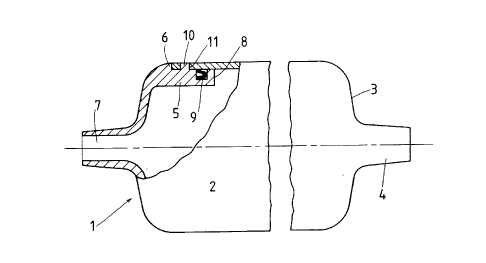Une partie des informations de ce site Web a été fournie par des sources externes. Le gouvernement du Canada n'assume aucune responsabilité concernant la précision, l'actualité ou la fiabilité des informations fournies par les sources externes. Les utilisateurs qui désirent employer cette information devraient consulter directement la source des informations. Le contenu fourni par les sources externes n'est pas assujetti aux exigences sur les langues officielles, la protection des renseignements personnels et l'accessibilité.
L'apparition de différences dans le texte et l'image des Revendications et de l'Abrégé dépend du moment auquel le document est publié. Les textes des Revendications et de l'Abrégé sont affichés :
| (12) Brevet: | (11) CA 2013551 |
|---|---|
| (54) Titre français: | JOINT D'ETANCHEITE POUR BASSE PRESSION ET CAPTEUR GARNI DUDIT JOINT |
| (54) Titre anglais: | REDUCED PRESSURE SEALS AND DEBRIS TRAP INCLUDING SUCH SEALS |
| Statut: | Réputé périmé |
| (52) Classification canadienne des brevets (CCB): |
|
|---|---|
| (51) Classification internationale des brevets (CIB): |
|
| (72) Inventeurs : |
|
| (73) Titulaires : |
|
| (71) Demandeurs : | |
| (74) Agent: | NORTON ROSE FULBRIGHT CANADA LLP/S.E.N.C.R.L., S.R.L. |
| (74) Co-agent: | |
| (45) Délivré: | 1998-06-23 |
| (22) Date de dépôt: | 1990-03-30 |
| (41) Mise à la disponibilité du public: | 1990-09-30 |
| Requête d'examen: | 1991-12-19 |
| Licence disponible: | S.O. |
| (25) Langue des documents déposés: | Anglais |
| Traité de coopération en matière de brevets (PCT): | Non |
|---|
| (30) Données de priorité de la demande: | ||||||||||||
|---|---|---|---|---|---|---|---|---|---|---|---|---|
|
La présente invention porte sur l'étanchéité de pièces d'équipement donnant passage à un liquide sous pression réduite et sur l'incorporation d'une lèvre d'étanchéité entre les pièces, les lèvres étant dirigées vers l'extérieur du joint entre lesdites pièces. L'invention traite en particulier de l'utilisation de lèvres d'étanchéité dans les pièges à débris faisant partie de l'équipement de filtration des piscines familiales.
This invention is concerned with the sealing of
component parts of equipment providing a path for
liquid therethrough under reduced pressure and to the
inclusion of a lip seal between the components with the
lips directed outwardly of the joint between the
components. More particularly the invention is
concerned with the use of lip seals referred to in
debris traps included in domestic swimming pool
filtration equipment.
Note : Les revendications sont présentées dans la langue officielle dans laquelle elles ont été soumises.
Note : Les descriptions sont présentées dans la langue officielle dans laquelle elles ont été soumises.

Pour une meilleure compréhension de l'état de la demande ou brevet qui figure sur cette page, la rubrique Mise en garde , et les descriptions de Brevet , États administratifs , Taxes périodiques et Historique des paiements devraient être consultées.
| Titre | Date |
|---|---|
| Date de délivrance prévu | 1998-06-23 |
| (22) Dépôt | 1990-03-30 |
| (41) Mise à la disponibilité du public | 1990-09-30 |
| Requête d'examen | 1991-12-19 |
| (45) Délivré | 1998-06-23 |
| Réputé périmé | 2003-03-31 |
Il n'y a pas d'historique d'abandonnement
Les titulaires actuels et antérieures au dossier sont affichés en ordre alphabétique.
| Titulaires actuels au dossier |
|---|
| ZODIAC POOL CARE, INC. |
| Titulaires antérieures au dossier |
|---|
| BARACUDA INTERNATIONAL, INC. |
| HELGE JOCHEN SCHNEIDER |
| KALLENBACH, DIETER H. F. |
| ZARINA HOLDING C.V. |